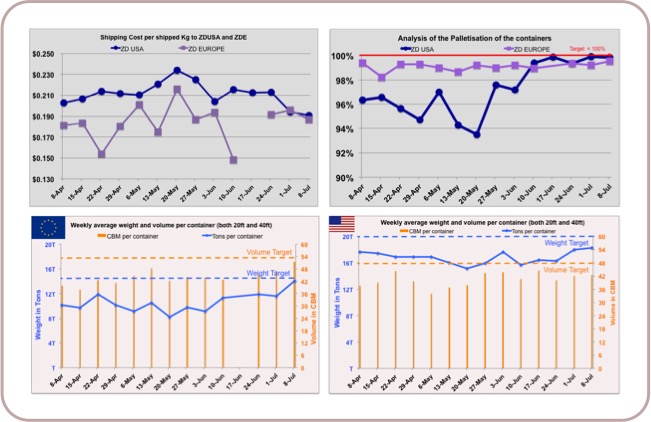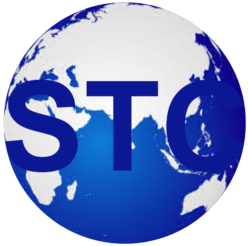Introduction
STC proposes an approach that designs for the Client the best tailor-made Organisation inspired from the “Best in Class” worldwide practices. It also delivers a Logistics Organisation that meets the “Needs” of the Client and satisfies all the stakeholders of the company: the Client’s other departments, the customers, suppliers, etc.
To ensure the thorough implementation of the new Logistics Strategy STC develops new processes and designs a new organisation. STC through a program of training and coaching supports the client through this transition stage.
Process
The approach that STC uses to structure these projects follows four phases:
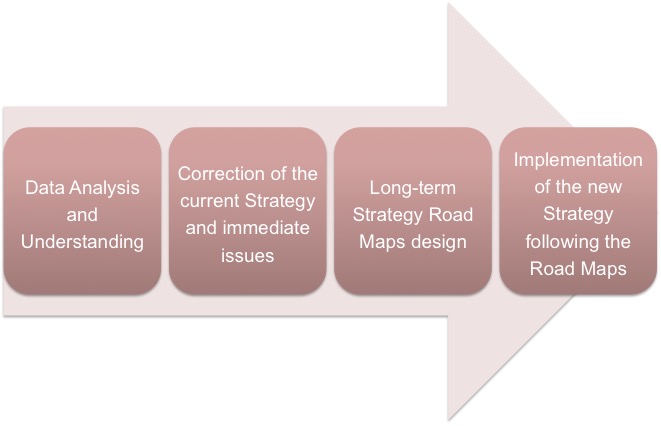
Some of the key topics that would de addressed in a Logistics Strategy Project Include:
- Understanding Immediate Needs
- Benchmarking
- Supply Strategy
- Structuring The Surrounding Functions
- Mapping of Strategic Events
- Strategy Road Maps
- SPRO – Strategy Roll Out
- Training
- KPI’s (Key Performance Indicators)
Understand Immediate Needs
As the logistics function is highly integrated into the company, impacting customers, quality and of course manufacturing operations, STC starts from a careful understanding of the needs of all the different functions.
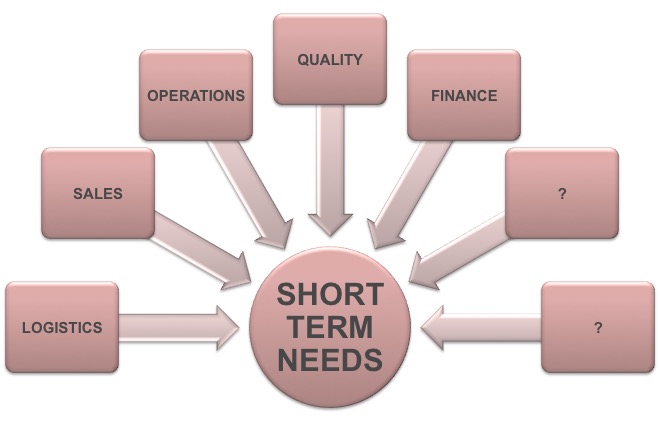
A part of this understanding also includes a deep analysis about how the current organisation is failing, again with views and positions from across the whole company.
Benchmark
STC, from its databases and from recent other projects, has developed a number of “Benchmarks”. These benchmarks are used to bring rapid solutions to problems. Often not the full organisation can be simply carried across, but elements can be extracted and used. As benchmarks are proven solutions the impact and success is high.

Supply Strategy
A key element, depending on the product line manufactured, could include the design of a Synchronised Supply Strategy, amongst others. Key parameters like distance to customer, product variations, set up, up-stream supplier locations need to be analysed together to determine the optimum solution.

Structuring The Surrounding Functions
Often the boundaries between functions like; sales, sales admin, planning and others have become “grey”. This “grey-ness” can cause inefficiencies and allow issues that should be raised and resolved to go un-noticed. STC helps its clients re-structure these functions that surround logistics, defining the responsibilities and the processes that manage their interaction.
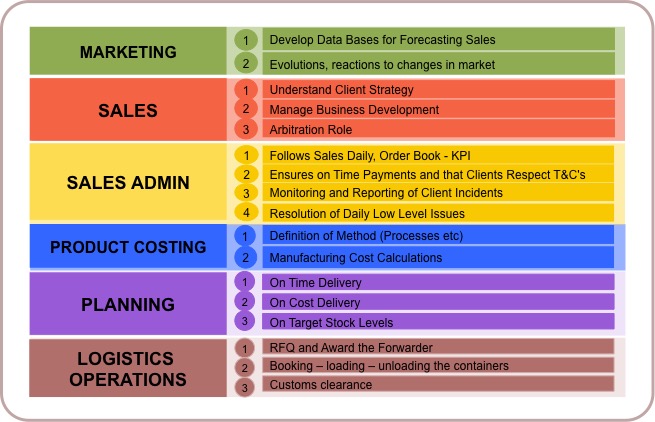
Mapping of Strategic Events
The need for a new logistics strategy and organisation is often driven by change. The company has grown is planning to. The customer base is expanding. The product range too. Understanding these events is a key corner stone of the new strategy.
In the mapping of events STC looks at how the business will develop in the main regions of the world.
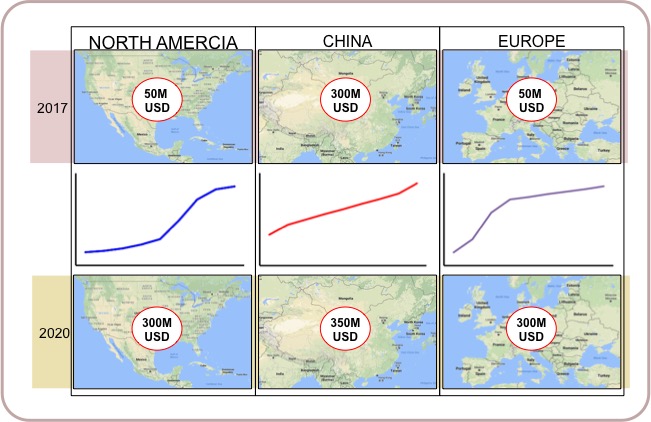
Following the “Global Overview” a next level of detail is developed, region and within regions, and of course by product line, and in time, as illustrated below:
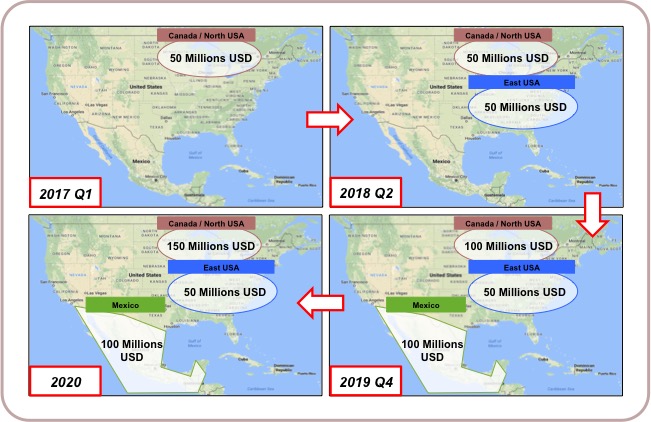
From this understanding of the main events, by world region, within region, by product line and in time enables STC to plan how the strategy and organisation evolves in time, which is then translated into the Strategy Road Maps.
Strategy Road Maps
The Strategy Road Maps are determined from an understanding of the “Gap” between the Strategy and Organisation today and where it needs to be in the future.
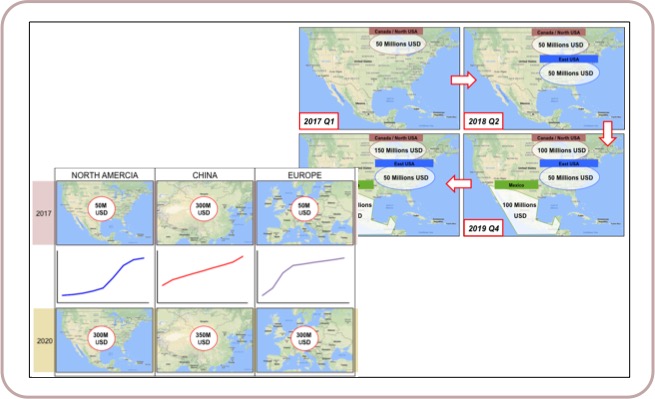
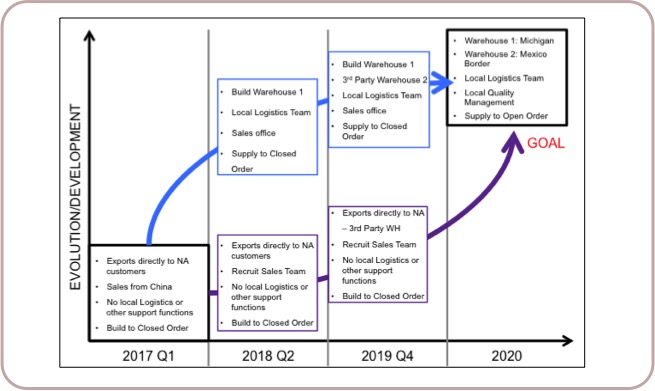
STC starts by determining the Logistics Strategy and Organisation for the future. Perhaps this is in 3 to 5 years.
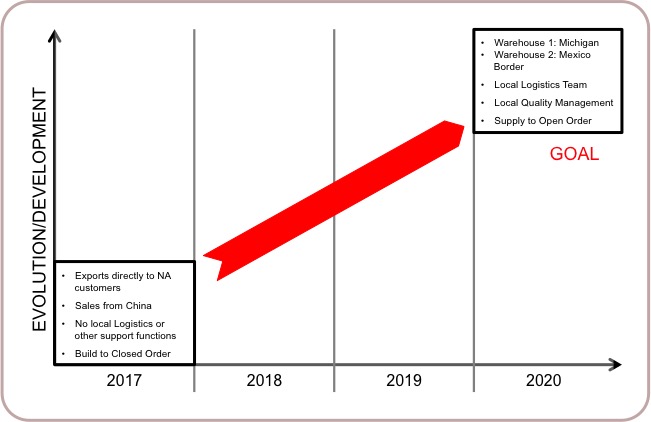
Working from the Strategy & Organisation of today and knowing the key events; Customer Changes, Product Changes, Geographical Changes for example, STC identifies several “Roads” to make the transition.

An analysis is then made, considering the different “Roads”, looking at hard aspects like cost, difficulties to implement, resources, skills, for example, and less tangible ones too. At the end of this analysis a final “Road Map” is selected.
SPRO – Strategy Roll Out
Now with a clear understanding of the new strategy STC employs its SPRO approach to roll out the strategy and facilitate its implementation
The SPRO Program is rolled out in the following way:
- S – Strategy
- P – STC designs and writes all the new Processes
- R – STC identifies the key issues for Resources and details the important job descriptions.
- O – STC designs a revised Organisation
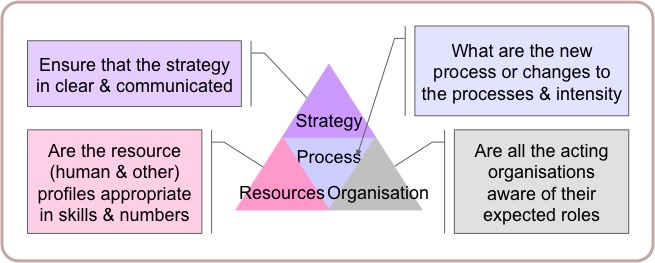
Following on from the writing of the Processes, and the understanding of the Logistics Organisation, and also using the knowledge learnt about the current commercial and other support Organisations in the different entities of the company, STC identifies the supporting Organisation and Resources that will be required to operate the Processes.
Training
To support the new Strategy the company needs to be trained. STC builds a program of training. This includes a detailed training on all the new Processes.
The training plan includes:
- What are the changes to the Strategy & Organisation and why they are important
- Timing & required Preparation
- New Processes
- Roles & Responsibilities
- How to use the KPI’s
- …
KPI’s (Key Performance Indicators)
To manage the implementation of the new organisation and to be sure that is is performing as planned STC develops a series of KPI’s. These KPI’s are established to enable the Client’s top management to take appropriate actions as necessary. The KPIs are developed and explained clearly in each of the Processes. The Logistics Organisation can be measured on a number of parameters, such as:
- Logistics overall costs
- Delivery incidents
- Stock level and audits
- 3PL Management
- Etc.
Examples of KPI’s
